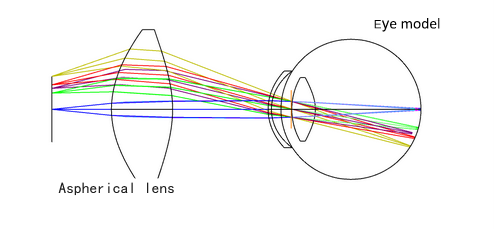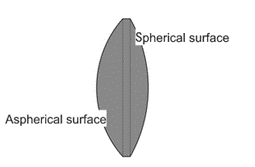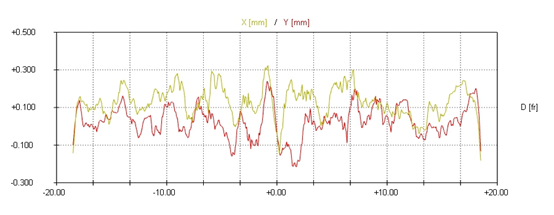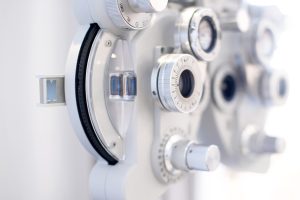Key Takeaways:
- Enhance eye examinations with aspherical lenses in indirect ophthalmoscopes. Our double convex lens correct aberrations for sharper images.
- Indirect ophthalmoscopes revolutionize eye examinations with advanced imaging systems.
- Aspherical lenses correct aberrations, enhance image sharpness, and reduce distortion for clearer fundus observation.
- With specifications like a 40D high-order lens, these instruments offer precise magnification and field of view.
- Crafted with CNC machining and coated with Vis-NIR antireflection film, Avantier ensures exceptional surface accuracy and compatibility with infrared lighting.
Case Study: Double Convex Lens for Indirect Ophthalmoscopes
An indirect ophthalmoscope is an instrument commonly used for eye examination, usually consisting of a light source and an imaging system. The light source emits a beam of visible or infrared light to the fundus of the eye, and the imaging system generates a fundus image by receiving the reflected light signal. One of the routine ophthalmic examination methods is to enlarge the fine structure of the eye so that doctors can more clearly observe the patient’s fundus lesions.
Unlike direct ophthalmoscopes, the imaging system of indirect ophthalmoscopes consists of a front lens. The eye inspector generally holds the front lens in front of the subject’s eyes. The light reflected from the fundus of the examined eye first passes through the front lens to form an enlarged inverted real image, and then the enlarged real image is attached to the sensor through the imaging lens.

Because the imaging effect of a spherical lens is not ideal, the front lens is usually designed with an aspherical surface. Compared with the traditional aspherical surface, the higher-order aspherical lens has more adjustment parameters, which can change the surface curvature of the lens to correct higher-order aberrations more accurately, thus improving the sharpness of the image. In addition, the high-order aspherical lens can reduce the distortion, increase the accuracy of the imaging, further improve the visual quality, and enable the doctor to observe the patient’s fundus more clearly.
Front lenses are generally distinguished by diopters, and different front lenses with different diopters have different magnification and field of view. The following is a 40D high order aspherical lens.
Specifications of Double Convex Lens

Diopter | 40D |
Material | H-K9L |
Shape | Convex lens, single-sided aspherical surface |
Diameter | 40mm |
Thickness | 15mm |
Lens performance
The lens consists of a spherical surface and an aspherical surface. It is not easy to obtain good surface accuracy for aspherical surfaces with small vertex curvature and obvious surface slope variation. The surface error of the aspherical surface generally refers to the PV value, which is the difference between the highest point and the lowest point of the ideal sag height. The large surface error not only affects the clarity of the image but also causes obvious distortion and affects the actual use effect of the lens.
The product is polished using CNC aspherical CNC machining equipment. Firstly, the spherical surface is machined, and the spherical surface is used as the datum surface for clamping. To cope with this lens’s convex surface of the aspherical surface, the polishing mold needs to be re-optimized. During the processing process, the surface accuracy and quality can be detected online, after meeting the requirements. The lens can be directly centered and edged, to ensure that the surface error PV of the lens is less than 0.5um, and the eccentricity requirement of less than 1 arcmin can be met.
At the same time, the surface of the product is coated with Vis-NIR broadband antireflection film, which not only meets the imaging needs but also can be used with infrared lighting.

Conclusion
In conclusion, the utilization of high-quality front lenses, such as the 40D high-order aspherical lens described in this case study, significantly enhances the imaging capabilities of indirect ophthalmoscopes. Through meticulous design and manufacturing processes, these lenses effectively correct higher-order aberrations, reduce distortion, and improve the overall visual quality for clinicians conducting fundus examinations. The precision machining techniques that are employed ensure minimal surface error and distortion, thus meeting stringent quality standards for optimal performance. Furthermore, adding Vis-NIR broadband antireflection coating enhances imaging clarity and compatibility with various lighting conditions. Overall, the advancements in Double Convex Lens technology showcased in this case study underscore the critical role of optical components in facilitating accurate and detailed ocular assessments, and how they ultimately benefit both healthcare providers and patients alike.
Related Content:





